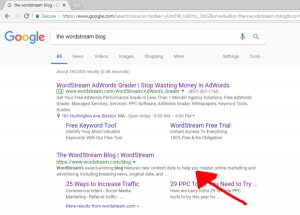Boost marketing collaboration and efficiency with streamlined communication, smart governance, work automation and more.
Marketing today involves complex workflows and processes, matrixed stakeholders and a mandate to execute at the speed of culture.
Here, I’ve distilled five secrets from the world’s most agile and effective marketing teams on how they simplify, standardize and collaborate to deliver better work more efficiently.
Spoiler alert: It turns out that it’s some of our old familiar marketing operations friends — alignment, communication, governance, automation and the right partnerships.
1. Efficiency will go south quickly without a North Star
The most effective marketing organizations (MEMOs) have one thing in common — crystal clear strategic alignment on goals, priorities, roles and responsibilities. They are working toward the same North Star; each person understands their role and how it contributes to the vision.
If your team is lacking this alignment, stop here. The rest of these secrets won’t help you yet. If you’re unsure where your team is on this, ask them. A short survey will give you enough information to know what they are missing and where to focus your efforts.
Beyond strategic alignment, MEMOs are aligned at the project level. They have visibility into planned and active workload, project status and overall team capacity. They have an established reporting cadence that delivers the right information to the right players at the right times, which allows them to head off any issues at the pass.
Adopting a project management (PM) system like Workfront, Asana, Trello or Monday.com can help provide structure and a single source of truth — a North Star — for this data. If you have a PM system in place but are not seeing the collaboration and outcomes you are expecting, it may be time to reassess your configuration or double down on your training and adoption efforts.
2. Forget over-communication, think ‘right-communication’
MEMOs are some of the busiest teams, but they follow clear and consistent communication protocols without fail, even in the craziest of times. These include:
- Types of communication that only and always occur within the PM tool.
- Types of information that are appropriate for each channel outside the PM tool (e.g., chat, Slack, Teams, email).
- Established response time norms for each medium.
- Consistent agendas for recurring meetings. Information that is covered there doesn’t get separate communication as it would be redundant.
- Meetings are recorded and outcomes are documented in a central location. Consider utilizing an AI note-taker like Otter.ai, which automatically creates a transcript summary.
With a “right-communication” strategy in place, everyone is informed and aligned, and there is no need for over-communication, which bogs the team down and slows the pace of work.
3. A good governance model = freedom and speed
The marketing ecosystem continues to get more complex with multiple matrixed stakeholders, global teams, external partners and the flattening of organizational structures. MEMOs have figured out that a “freedom within a framework” governance approach allows them to balance rigid hierarchical decision-making and the ability to move at the speed of business.
MEMOs utilize a RACI to identify who is Responsible, Accountable, Consulted and Informed on each tactical step of their workflows, preventing the ambiguity and decision paralysis that kills productivity, causes delays and negatively impacts work quality.
Some teams use variations like RASCI (Responsible, Accountable, Supporting, Consulted, Informed) which can better delineate roles for very complex and cross-functional workflows. This is the “framework” part.
Alongside the RACI or RASCI, MEMOs also have a well-articulated system that delegates sign-off authority by spending thresholds, risk levels and types of programs — with clear exception and escalation “trap doors” at each step, eliminating work stoppages that occur when any one individual is holding up progress. This is the “freedom” part.
If your team doesn’t have a RACI or RASCI in place, work with your senior marketing leaders and key partners to document one, starting at the high-level milestones of your workflow. Then, work your way down to more granular steps with input from the functional leads and tactical SMEs.
Think through your exception and escalation paths carefully. But remember that the point is to empower teams to do their best with the information they have and keep moving. You made good hires, so trust them to do the right thing.
You certainly won’t get it all right the first time — neither do the MEMOs — so be sure to adjust and revisit as teams, needs and workflows evolve (which is to say, frequently!)
4. It helps to have a slacker mindset
MEMOs are full of slackers who try to delegate as much of their jobs to automation as possible. (Kidding! Partly, anyway.) It is true, however, that MEMOs have automation in place to execute most of their routine tasks on time and without error, drama or PTO.
They’ve proven the increase in efficiency, and they spend the found time on strategy, innovation and trouble-shooting that can only be done by humans (well, today at least) — ultimately leading to higher quality work reaching the market faster.
From automating email campaigns to scheduling social media posts, integrating data across platforms, generating reports and prompting the next approver in the workflow, work automation tools such as Zapier, Hootsuite, HubSpot and Workfront exist to do exactly that and they are more accessible and user-friendly than ever.
If you are new to automation, attempting too much transformation at once will likely backfire. Start small and allow for time to build the muscle on your team. Identify a few tedious tasks that are currently being executed manually (spreadsheets are a good place to look), build a simple automation and gain some confidence.
Later, tackle processes involving multiple systems and workflows, eventually working up to more complex scenarios fueled by AI. Baby steps lead to big productivity gains. The MEMOs didn’t get there in a day, either.
5. You’re gonna need a little help, so plan for it
You don’t have to do it all yourself and you probably shouldn’t. MEMOs don’t either. So let’s talk about outsourcing. Not in a “ship all your jobs overseas” kind of way, but in a “partner with the best resources for the job” kind of way.
Outsourcing is the not-so-dirty, not-so-secret strategy of MEMOs for building and maintaining efficient workflows all year long, not just during peak or crunch times. They have a clear and intentional strategy for what they outsource, where and why. It reduces internal workload and allows teams to focus on their core strengths.
Tossing random jobs over the transom to a stable of partners who happen to have time and then hoping for the best won’t help you gain efficiency or speed. It will result in swirl and waste.
You need a strategy. Identify specific tasks or even entire competencies that can be strategically delegated to external experts. Consider activities that don’t require specific brand or institutional knowledge, skills that are needed infrequently and gaps (intentional or otherwise) in your team’s expertise.
A clear strategy will also allow you to be very selective in the partners you bring on board. Vet them thoroughly — check reviews, ask for case studies and references, meet key players.
Once partners are in place and your strategy is in motion, start with small projects and work on larger, more complex ones. Be a good collaborator and set them up for success. Be proactive and planful, provide ample direction, check in frequently and give regular, specific feedback. The success of the work still comes back to your team.
Strategies for aligning your marketing workflows
Achieving smooth teamwork and efficient workflows is an ongoing process. In today’s marketing landscape, the destination is always a moving target.
Goals and strategies shift, new channels come and go, projects don’t always go according to plan, urgent priorities pop out of nowhere and people get pulled off track.
But by implementing the strategies that MEMOs use for alignment, communication, governance, automation and partnerships, you can operate better and increase marketing’s impact on the business. And don’t be surprised if you see your employee engagement scores improve to boot.
The post 5 secrets of streamlining marketing workflows appeared first on MarTech.
MarTech(39)
Report Post






